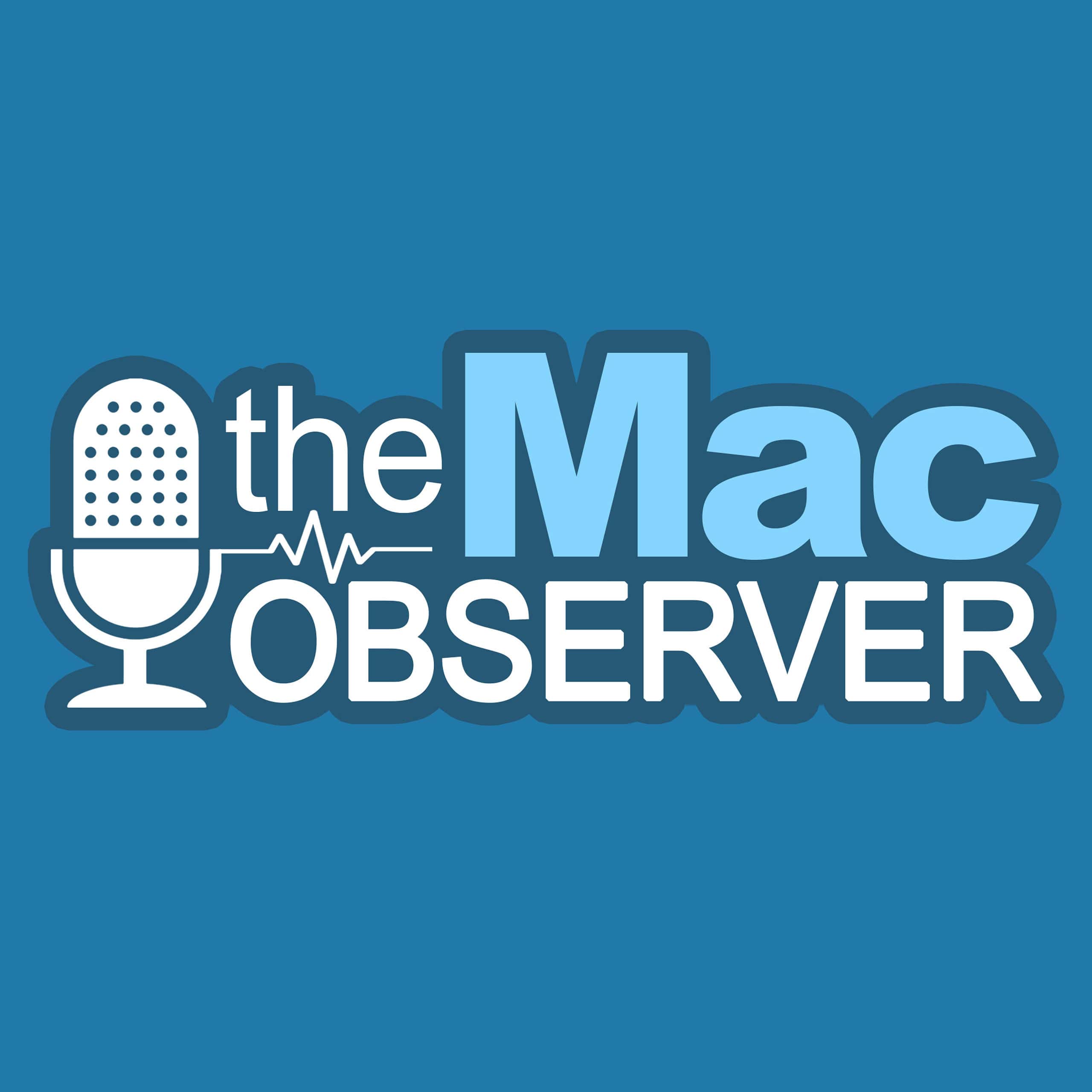Andrew Orr and Bryan Chaffin join host Kelly Guimont to talk about JC Penney’s removing Apple Pay and Elon Musk’s vision for Tesla taxicabs.
Apple Pay
JCPenney Explains Apple Pay Removal
This morning we heard that JCPenney quietly removed support for Apple Pay from its stores. Now we have a better idea why.
The retailer now claims the move was necessitated by the April 13, 2019 deadline in the U.S. for supporting EMV contactless chip functionality. As of this date, all terminals at U.S. merchants locations that accept contactless payments must actively support EMV contactless chip functionality, and the legacy MSD (magnetic stripe data) contactless technology must be retired. JCPenney was not ready to comply, it seems, so it switched off all contactless payment options as a result. However, it hasn’t ruled out re-enabling them later on, it seems.
You Can No Longer Use Apple Pay at JCPenney
Over the weekend, JCPenny’s support account on Twitter confirmed it has removed Apple Pay from its retail stores.
Apple Pay is Coming to Switzerland’s Credit Suisse
Credit Suisse, the second largest bank in Switzerland, recently announced that Apple Pay is coming for its customers.
Uber Eats Adds Apple Pay
Uber Eats is adding Apple Pay as a payment option in almost 20 markets, so it’s now easy to pay via Touch ID/Face ID.
Cashless Stores, Mozilla's Privacy Push – TMO Daily Observations 2019-04-15
Bryan Chaffin joins host Kelly Guimont today to talk about the rise of cashless stores, and Mozilla’s petition to “improve” iOS ad tracking.
Backlash Against Cashless Stores
There is no federal law that requires stores to accept cash, which was something that surprised me. So some stores are going cashless, but some argue this discriminates against poor people who don’t have a bank account and/or a fancy smartphone.
Advocates for cashless bans worry technology is moving too fast for the 6.5% of American households — 8.4 million — that do not have a bank account, according to figures from the Federal Deposit Insurance Corporation.
Cashless is hard enough, but imagine if you walked into a store only to find out that it only accepts Google Pay. That might bring the reality a bit closer to home.
Going Cashless is in Our Near Future
Jefferson Graham writes how going cashless is the future, with contactless payment apps like Apple Pay ushering this reality in.
“It seems that people are moving away from cash and technology is making it easier than ever to tap and go.” Advantage: faster checkout lines, and the elimination of fees for armored car cash pickups and fear from employees about getting robbed.
For the most part I’m already mostly cashless. The only thing I need cash for is laundry. For everything else I use a debit or credit card.
SXSW: CLEAR Expands Identity Verification from AirPort Security Lines to Point of Sale
CLEAR, the company whose members we all enviously gaze upon at the airport as they breeze past those of us in the TSA Pre-Check lines, is expanding their identity verification technology to point of sale. Testing in some Seattle sports stadiums, CLEAR’s ability to use biometrics to confirm that you are definitively you is helpful for age verification for alcohol sales, but could also just make point of sale simpler, in general. Part of their mission all along, they figured if they could get approval for their tech to be used to confirm identity at airports, it was certainly going to work to add convenience to point-of-sale while also increasing the security of the transactions. Of course, Apple’s introduction Touch ID at point of sale with Apple Pay starting in 2014 has helped the masses understand the usefulness of this technology. That rising tide lifts all boats, including CLEAR’s. Look for CLEAR to roll out more instances of this tech in the coming year.
Apple and Goldman are the FinTech Power Couple
Wall Street was surprised when Apple chose to partner with Goldman Sachs. According to a new article by WSJ, other financial institutions like Citigroup and JPMorgan Chase offered their services to Apple as well.
Goldman can’t do it on its own either. It is new to consumer banking, having spent most of its 150-year history catering to big companies and billionaires. Without branches, it needs other ways to find customers for its online savings and lending business. Apple, too, needs new engines of growth as iPhone sales slow.
Save on Fandango Tickets for the Oscars With Apple Pay
By using Apple Pay you can save US$5 off two Fandango tickets just in time to watch the Oscars.
During the checkout process, enter the code APPLEGOLD and use Apple Pay to complete your order. This will take $5 off your movie tickets, and you have until February 24 to use the promo code.
You’ll have to buy two or more tickets in a single transaction in the Fandango app or on its website in order to get the discount.
Apple Pay Comes to Saudi Arabia, Czech Republic
Apple Pay is rolling out to customers in Saudi Arabia and the Czech Republic. Multiple people have been seeing it.
DuckDuckGo Improvements, Payment System Updates – TMO Daily Observations 2019-02-14
Kelly Guimont has Andrew Orr and John Martellaro on to discuss updates to the DuckDuckGo iOS app, and the current(c) state of NFC payments.
Apple Pay Support Comes to Over 20 Banks Worldwide
Aside from French banks adding support, Apple updated its list to reflect the addition of over 20 more banks.
The U.S. bank list is now so long that Apple has introduced alphabetical sub-sections to make it easier to find your bank on the list. Other new entries added to the most recently updated list include Qpay in Australia; HSBC in France; Surgutneftegasbank in Russia; Banco Mediolanum in Spain; Concord bank and UkrSibbank in Ukraine; and N26 in the UK.
BNP Paribas, HSBC Banks Support Apple Pay in France
Apple Pay in France is getting support from BNP Paribas and HSBC Banks, joining 25 other French banks.
Should Apple Have its own Debit Card?
John Detrixhe argues that Apple should release its own debit card to prepare for the wave of contactless cards.
But consumers typically avoid moving their financial accounts and tend to be faithful, even when they dislike the service. An Apple debit card is a chance for the Silicon Valley-based company to give customers what they want—for God’s sake—before someone else does.
I’m not sure I’m sold on this idea. For a debit card maybe Apple could work with the bank it uses for device financing. I think what would be nice though is for Apple Pay Cash to work more like its own bank.
Apple Has 3 New Spots to Promote Apple Pay Cash in iMessage
The spots show Apple Pay Cash being used by family members to share costs and directly pay for stuff.
Return of the iPhone SE, Apple Pay Marches On – TMO Daily Observations 2019-01-22
Host Kelly Guimont chats with John Martellaro and Charlotte Henry about the return of the iPhone SE and Apple Pay’s continued deployment.
Use Apple Pay to Buy Nacho Fries at Taco Bell
Now that Taco Bell is bringing back nacho fries, you can use your iPhone or Apple Watch to pay for them.
Apple Pay Support Coming to ING in Spain 'Soon'
ING customers in Spain will finally be able to use Apple Pay, over two years after the service launched in the country.
TD Ameritrade Adds Support for Apple Pay, Apple Business Chat
Brokerage company TD Ameritrade adds support for Apple Pay and Apple Business Chat. This gives customers immediate access to funds transferred to their account.
Apple Pay Czech Could Come in February or March
The first group of banks to support it include Česká spořitelna, mBank, Komerční banka, Moneta and AirBank.
Apple Maps in India Finally Gets Turn-by-Turn Navigation
Turn-by-turn navigation on Apple Maps finally made it to India this week, as did the ability to order an Uber from within the app.
Swiss Apple Pay Issue Resolved
Apple has offered an unspecified technical fix to a problem with Apple Pay in Switzerland that disrupted the use of a local alternative.











